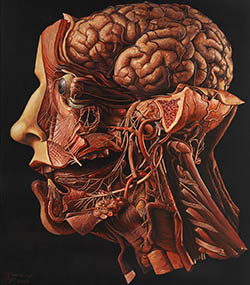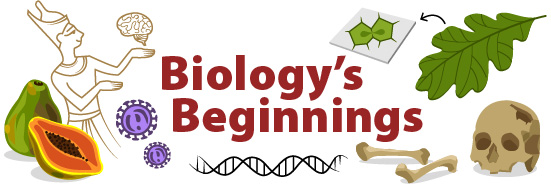Books and Dead Bodies
Like a body rising from the dead, biology came back to life around the 1400s. This was the beginning of the Renaissance in Europe. It marked the end of the Early Middle Ages and the start of new learning. Art, books, and science all became popular once again. Biologists during this time focused on learning more about the human body. That meant studying dead ones.

Dissection was one of the major ways biologists discovered how the body worked. They would put a dead body on a table and slice it open. This way, they could see everything that lets humans run around. Not many people had studied the inside of the human body before. Now they saw veins, nerves, bones, and muscles. Biologists poked around everything. Afterward, they drew pictures of what they found. This helped them understand how it all connected.
Artist or Biologist?
But scientists weren’t the only ones who wanted to know. Artists also wanted to know how the body worked. They wanted to draw and paint more accurate human figures. Leonardo da Vinci studied anatomy so he could paint the human body better. Sculptors, too, needed to study the body to do their work better. A man named Andreas Vesalius was a scientist who worked a lot with corpses. He eventually published a book about the insides of a human body. He included drawings (ick).
In fact, all this new knowledge about biology wouldn’t have spread very far without books. In the 1400s, a man named Johannes Gutenberg invented his printing press. That press let people print books more easily and far faster. New knowledge passed quickly around Europe in books. It paved the way for more and more discovery.
Additional images via Wikimedia Commons. Photograph of da Vinci's A Female Head (La Scapigliata) from the Web Gallery of Art.
Read more about: Biology's Beginnings
Bibliographic details:
- Article: Buried in Bodies
- Author(s): Dr. Biology
- Publisher: Arizona State University School of Life Sciences Ask A Biologist
- Site name: ASU - Ask A Biologist
- Date published: 6 Aug, 2015
- Date accessed:
- Link: https://askabiologist.asu.edu/buried-bodies
APA Style
Dr. Biology. (Thu, 08/06/2015 - 15:09). Buried in Bodies. ASU - Ask A Biologist. Retrieved from https://askabiologist.asu.edu/buried-bodies
Chicago Manual of Style
Dr. Biology. "Buried in Bodies". ASU - Ask A Biologist. 06 Aug 2015. https://askabiologist.asu.edu/buried-bodies
Dr. Biology. "Buried in Bodies". ASU - Ask A Biologist. 06 Aug 2015. ASU - Ask A Biologist, Web. https://askabiologist.asu.edu/buried-bodies
MLA 2017 Style

Be Part of
Ask A Biologist
By volunteering, or simply sending us feedback on the site. Scientists, teachers, writers, illustrators, and translators are all important to the program. If you are interested in helping with the website we have a Volunteers page to get the process started.

